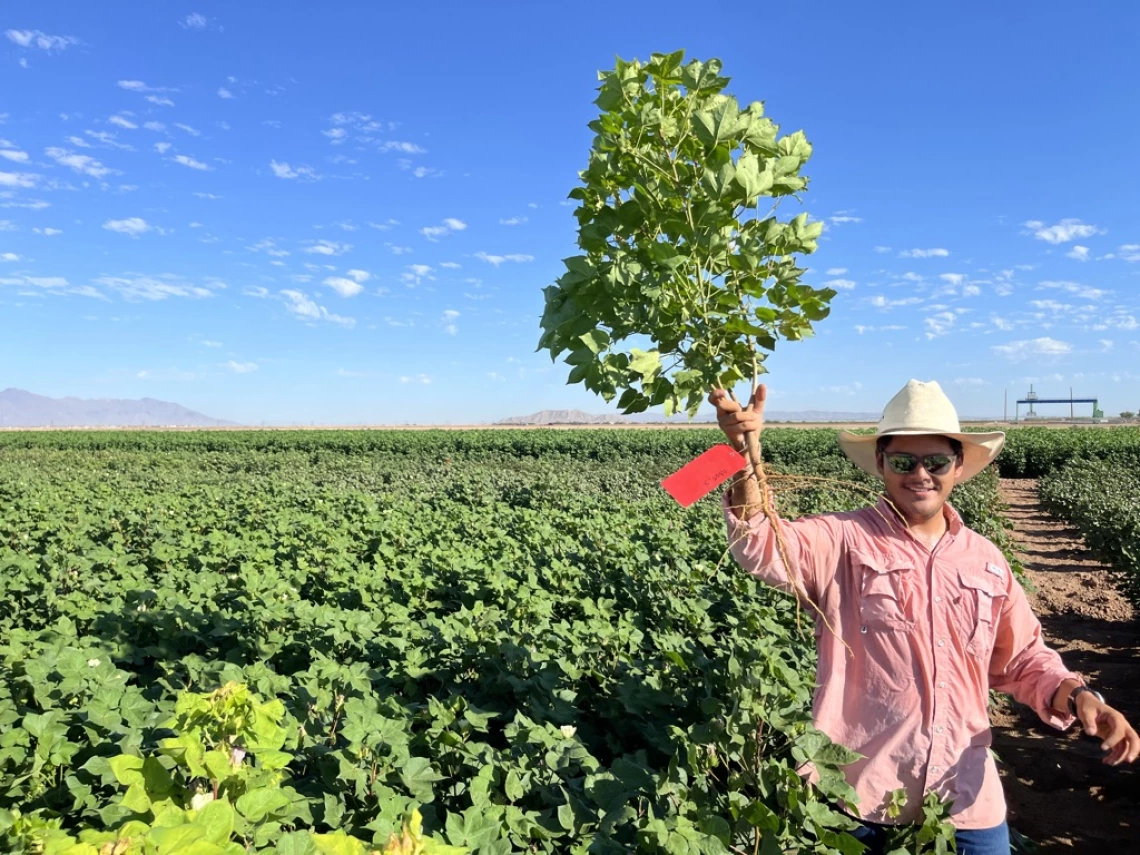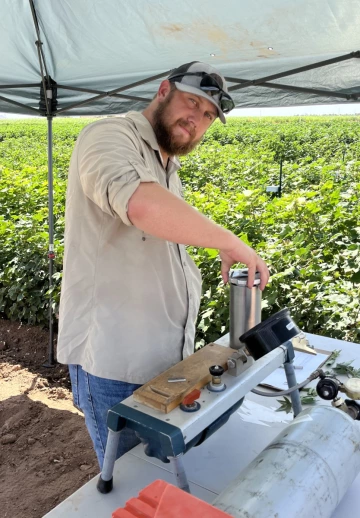Desert field research aims to shed light on the mechanisms behind plant water regulation
Graduate students seek to better understand water regulation in plants through field research.

Sebastian Callejas, graduate student at the University of Arizona's School of Plant Sciences, conducting field research at the Maricopa Agricultural Center.
Arizona’s unyielding summer sizzle might be dreadful for many, but to researchers studying plant water regulation in crop plants, it’s the perfect weather.
“Business was good this year,” said Duke Pauli, associate professor in the School of Plant Sciences, and lead of a research program that explores the genetics of drought-resistant plants. “Thirty-some days above 110°F degrees, and if you're the guy studying heat and drought, it doesn't get any better.”
The genetic processes that control water movement in crop plants are not well understood, hampering our ability to develop crops that can thrive in water-limited environments—like the Sonoran Desert. Pauli and his students want to bridge this lack of knowledge by studying these stress-adaptive traits in cotton, and there is no better place to study plants grown under drought conditions than central Arizona. On the ground, this looks like “intrepid graduate students braving the worst month of July ever in history,” according to Pauli.
Sebastian Calleja and Clay Christenson are two brave University of Arizona graduate students studying plant water regulation in sunny Maricopa, Arizona. Though the desert is ideal for their research, it’s not always sunshine and rainbows.
“We're not inside or in greenhouses. The plants that we're growing are outside and exposed, which adds challenges to the research we're doing,” Calleja said. “Realistically, it's not feasible to collect all these measurements in a consistent and timely manner because the next day may be cloudy, and the environment changes. There is a lot of variability that we don't necessarily expect, so we have tools, called high throughput phenotyping tools, that allow us to be more efficient.”
High throughput phenotyping (HTP) tools help the research team observe and quantify the plant characteristics responsible for drought adaptation. Tools can vary from ground-based imaging to aerial phenotyping using small, unoccupied aerial systems (sUAS, i.e., drones).

Plant Science graduate student Clay Christenson.
Clay Christenson said, “A lot of what I do uses real-time sensor data. We have a device called a microtensiometer that you insert into the stem of the plant. It continuously measures stem water potential. Similar to how doctors might continuously monitor blood pressure or heart rate to monitor human health, we can use stem water potential to assess the plant’s stress level at that moment.”
The tools and techniques used in this research program are meant to educate and train the next generation of scientists to mitigate the threat of crop failures posed by hotter, drier climates. The research team hopes the information gathered can deepen their understanding of the mechanisms that control water movement in plants and can be used by communities to enhance crop resiliency and improve crop water management.
